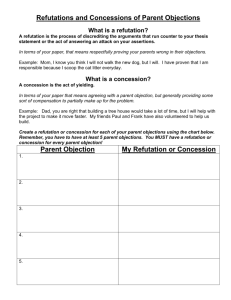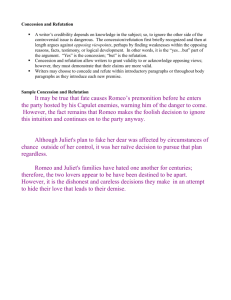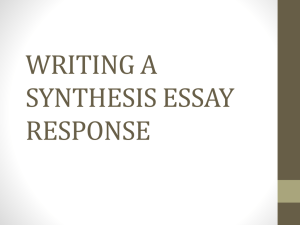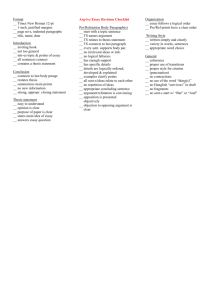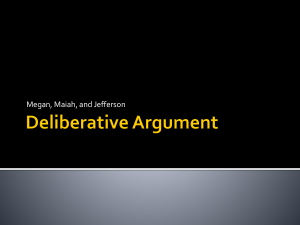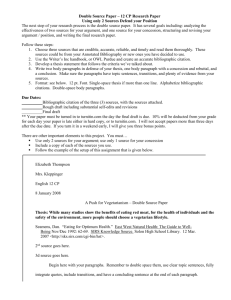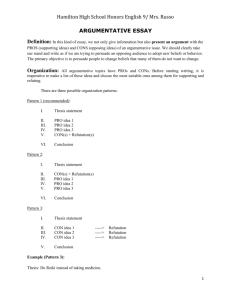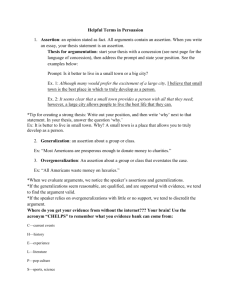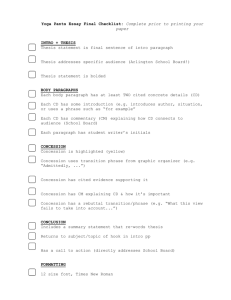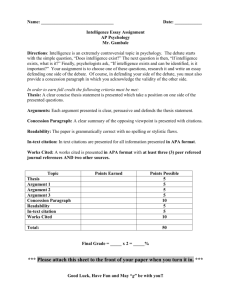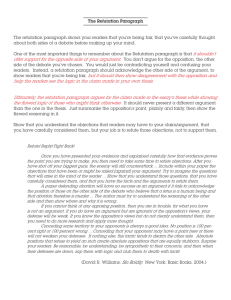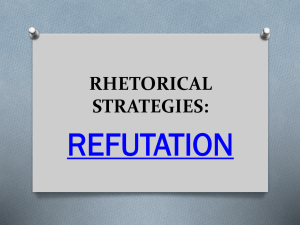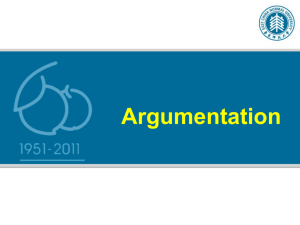Literary Argument
advertisement
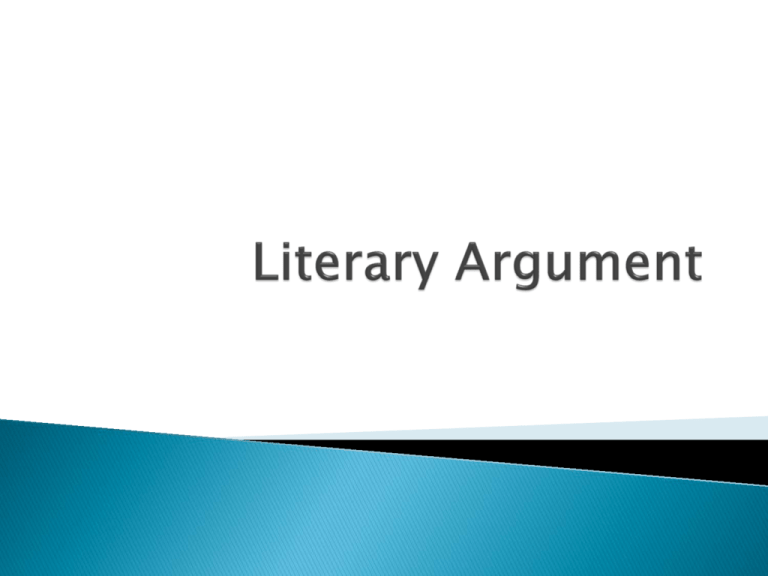
Unit 2 materials Writing project prompt Writing project rubric With your group, read the prompt and the rubric and discuss the following: ◦ What specific skills and/or writing concepts do the students need to know in order to complete the project? ◦ What difficulties can you envision your students having with completing the literary argument? Take a position Support your argument with specific, relevant evidence from the texts Thesis (take a position) Organization (your argument) Evidence (specific, relevant evidence) Is a debatable topic – a topic on which reasonable people can hold different views Takes a strong stand – needs to be able to support the full weight of your whole argument Has a quality antithesis – one that could also be argued by reasonable people Model: The Disney animated classic Sleeping Beauty promotes a passive female archetype who needs a male character to take action and save her. Antithesis: The Disney animated classic Sleeping Beauty promotes a female character who uses generosity and kindness to actively make the best of her situation. With your group, create a strong thesis statement about an animated Disney movie, and then write an antithesis. Be prepared to share. Introduction and Thesis Definition, background, setup Support 1 with evidence and explanation Support 2 with evidence and explanation Support 3 with evidence and explanation ◦ The logical one ◦ The slightly odd or unknown one ◦ The strongest one Concession Refutation (of the concession) Conclusion Introduction and Thesis Definition, background, setup Support 1 with evidence and explanation ◦ The logical one Support 2 with evidence and explanation ◦ The slightly odd or unknown one Support 3 with evidence and explanation ◦ The strongest one Concession Refutation (of the concession) Conclusion With your group, discuss ways to scaffold the concession and refutation section with your students. Share. Although I grant that _____, I still maintain that _____. Proponents of X are right to argue that _____. But they exaggerate when they claim that ____. While it is true that ____, it does not necessarily follow that ____. On the one hand, I agree with X that ____. But on the other hand, I still insist that ____. From They Say/I Say Refutation by appeal to reason ◦ Denying a truth of a premise (premise is false so conclusion may be false) ◦ Objecting to inferences drawn (premises may not lead to conclusion Refutation by appeal to emotion ◦ Dangerous! ◦ Author needs to know the audience well, or appealing to the way the audience feels could backfire Refutation by appeal to speaker’s credibility ◦ Difficult for our students, but not impossible depending on the topic Refutation by wit ◦ Also dangerous, and could backfire with wrong audience All taken from Classical Rhetoric for the Modern Student by Edward Corbett and Robert Connors I think X is mistaken because she overlooks ____. X’s claim that ____ rests upon the questionable assumption that ____. By focusing on ____, X overlooks the deeper problem of ____. At your table, discuss any questions or ideas you have about concessions and refutations. Share out. Only assertions that are self-evident or factual need no evidence; everything else needs support. Some questions to ask: Do all your assertions have evidence (quotes, summaries, paraphrases) that support them? Have you quoted material out of context, or distorted the evidence? Does all the evidence tie directly to your assertions, and, ultimately, your thesis? With your group, discuss how you can scaffold students’ use of evidence along the way, instead of having them try to find all of the evidence from all of the texts at the end of the unit.
